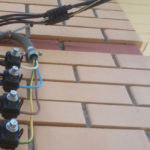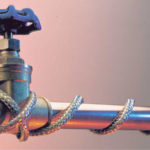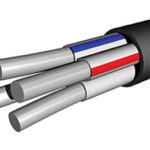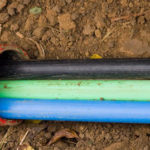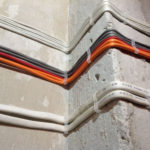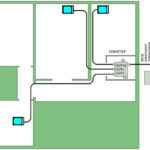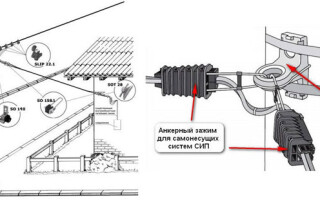When building or renovating a house, as well as the modernization of electrical networks, there is a need to bring a new electrical cable to the house. Self-supporting insulated cable (SSI) is most commonly used for this connection, which is made from the pole of the power line. Let's look at the steps for installing and connecting the cable from the pole to the house, Ways to connect wires on the pole and frequent mistakes when performing this type of electrical installation work.
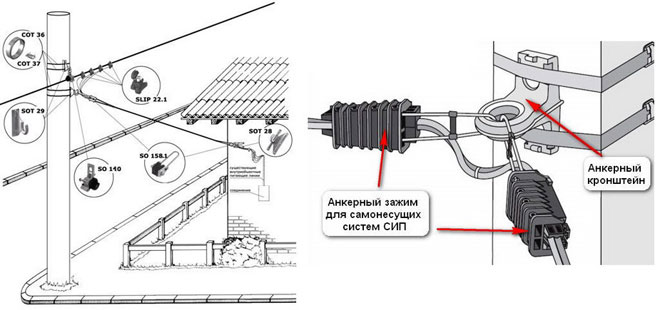
Content
Mounting the NPI cable from the pole to the house
Correct installation CIP cable begins with its fixation and connection on the pole by measuring the distance from the nearest pole to the object to be connected. The fact that the distance from the pole to the point of attachment to the building should not exceed 25 meters, otherwise it is necessary to carry out installation of additional electric poles.
It is also important to choose the correct cross-section of the electric LV-ABC cable. The most common type of self-supporting wire used in residential construction is 4×16.
Fixing the wire on the pole
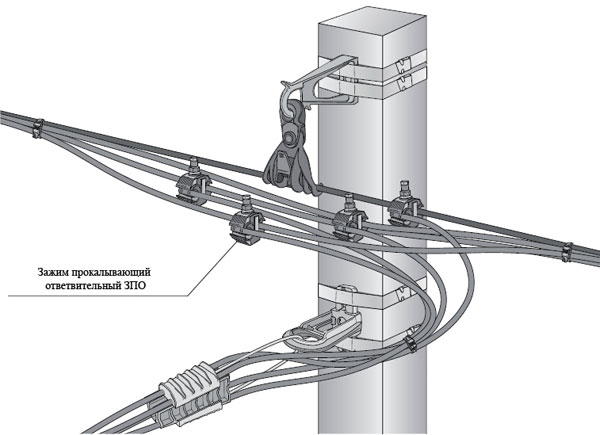
The first thing to do with the wire is to properly and securely fix it to the transmission line pole. Since you can not drill holes in the electric pole, you can use galvanized steel tape, beams (reinforced fasteners to connect the tape and tighten it), as well as special brackets.
In order to fix the bracket on the post, the tape wrapped as a bandage in two rows around the post, mount the bracket between them and tighten by fixing the tape staples. After that, take the anchor tension clamp, pass the cable through it and fix it on the bracket.
Bringing from pole to house
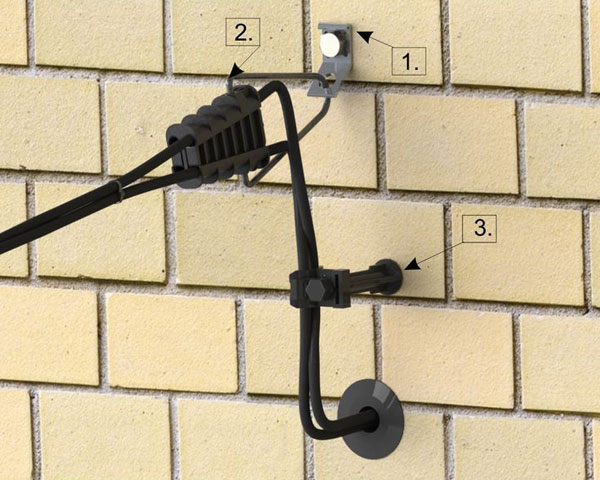
The next operation is to bring the cable to the house, tension it, fix it and connect it. To fix the LV-ABC wire on the facade of the building, a similar bracket is used, but it is fixed with anchor bolts. According to SNiP, the height of wire fixing on the facade of a residential building must be 2.75 meters, so if this parameter does not correspond to the design features of the house, the entry must be made through the roof. Anchors are selected based on the material of the load-bearing walls to which the bracket and wire will be fixed. To fix the wire on the bracket, an anchor clamp for LV-ABC wire is used, the same as used on the pole.
It is important to know that the lead-in cable from the power line to the point of connection (switchboard) should not have gaps and connections, and must be solid.
An important step is also the correct tensioning of the cable, as excessive sag negatively affects the durability and reliability of the mounted wire.
Tensioning an LV-ABC wire
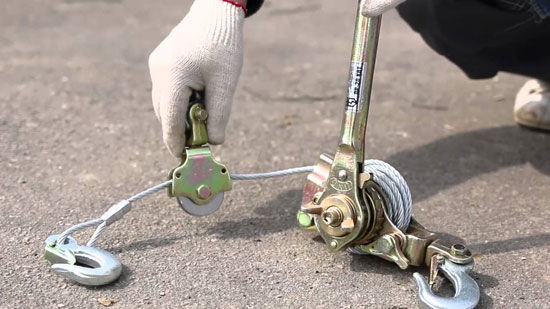
Tensioning of self-supporting insulated wire is carried out using a hand hoist (winch), which has a special gripping mechanism for the supporting wire or the whole cable of the CIP. When carrying out this work, the main thing is not to overdo it and clearly calculate the applied force, preferably using a dynamometer. When working on the project, it will necessarily specify the tension of the cable. But if there is no such documentation, you can use a special mounting table. Such a table will indicate the value of the tension force for different ambient temperature conditions and the length of the sweep.
It is very important, however, to use tables and measure the tension of the wire, and not to perform the installation "by eye". Because in winter, under unfavorable conditions (snowfall, ice), the cable will not break, and moisture will not run down the cable inside the building, and will not get into the electrical panel.
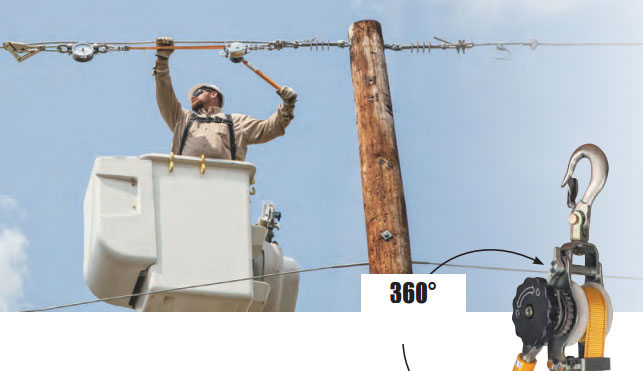
Ways to connect the wire on the pole
Several options are used to connect the LV-ABC wire to power transmission lines on the pole, depending on the cable of the transmission line.
For insulated cable lines, special piercing clamps are most often used, which are available in a wide range for different cross-sections and types of insulation. Some piercing terminals can be applied without line undervoltage: their design has a piercing head inside the insulation, which allows to safely connect the IPS to the power line. At the same time, the design of piercing clamps does not allow them to be reused, so everything must be calculated competently, without the right to error.
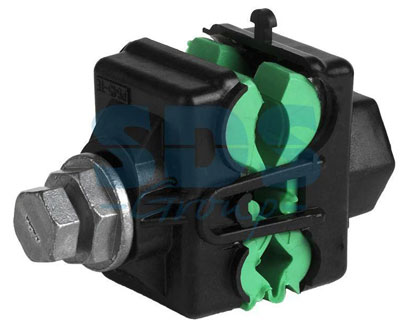
But for bare conductors use special clamps, which have contacts with a smooth surface and have no piercing elements.
When connecting the house to the power line, it is better to coordinate all actions with the power supply organization. Such organizations may have their own requirements for making connections and the materials used.
Some "masters" run the LV-ABC down the pole and lay it underground to the house. But it is important to understand that self-supporting LV-ABC cable is not designed for such installation, as it has no special protection against harmful influences and armor against mechanical damage, so it is only designed for laying in the air.
Connection to the fuse box and the meter
Entering the house and laying the cable to the switchboard is carried out in special metal cable channels, corrugations or pipes. Usually a normal water-supply steel tube is used for this purpose. It is important that unprotected wiring conductors shall be kept out of reach (including accidental) of places often visited or passed by people. Also according to clause. 2.1.79 PUE it is recommended to install the cable in the pipe so that water does not accumulate in the passage and does not penetrate into the building, especially to the electrical installations.
In the switchboard cable is connected to the main switch, with a preliminary crimping of the cores with aluminum and copper alloy pins, and from the switch, to the main circuit breaker and then to other protective devices (RCD, differential automatics and automatic circuit breakers of lines).
Sometimes to the cable CIP, using the same piercing terminals attached branch lines of copper cable VVGng, and it is connected to the switch in the switchboard or directly to the input circuit breaker (depending on the cross section of cable).
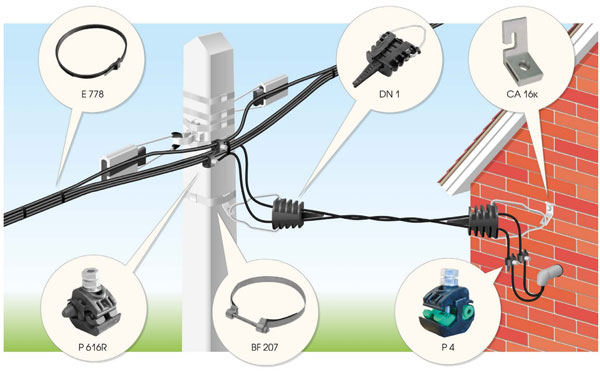
Possible installation errors
When installing an inlet to the house with CIP cable can be difficult, and to avoid mistakes, listed below are the most common:
- Weak tensioning: no dynamometer was used for tensioning and the installation was done "by eye". This error can lead to increased stress on the cable, especially in winter, and to cable breakage.
- Excessive strain: also has a negative effect on the cable, especially on its insulation.
- Attempting to reuse piercing clamps: they are disposable because the head tears off and reassembly is not possible.
- Damage to the insulation during the work: it is important to use a solid cable, damage to the insulation can lead to short circuits or electric shocks.
- Loose clamps: conductors must be properly and securely clamped in the clamps and not dangling in the clamps. Poor clamping leads to poor contact, sparks and cable damage.
Safety precautions
The first and most important thing in any electrical installation work is the observance of electrical safety rules.
- Do not work in high humidity, fog or rain, or at night or at dusk;
- It is necessary to use only certified and reliable tools, cables and fasteners;
- Do not use cable that is damaged;
- Do not use any fasteners or clamps that are not designed for the type of cable being used;
- The work must be carried out strictly with the use of protective clothing;
- Wires under voltage must be insulated with special covers;
- Work at height must be carried out by professional installers with machines and mechanisms designed for work near power lines and have the appropriate permit.

